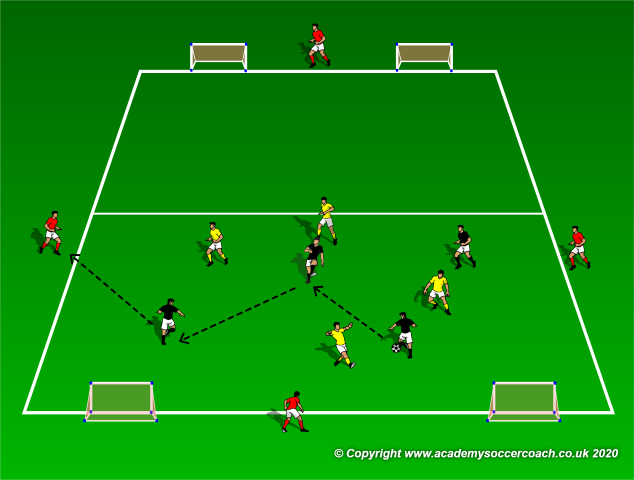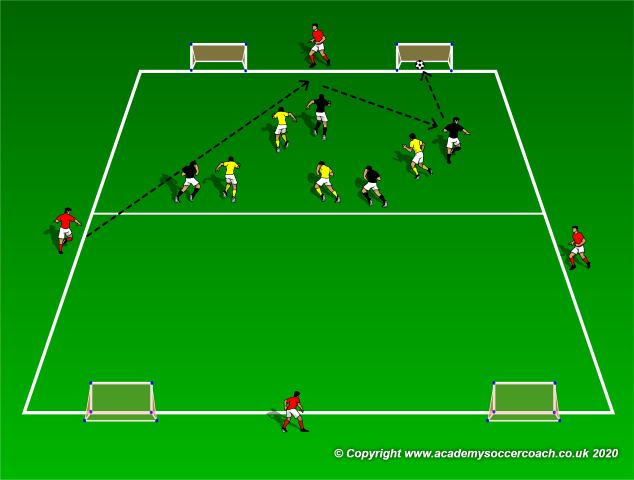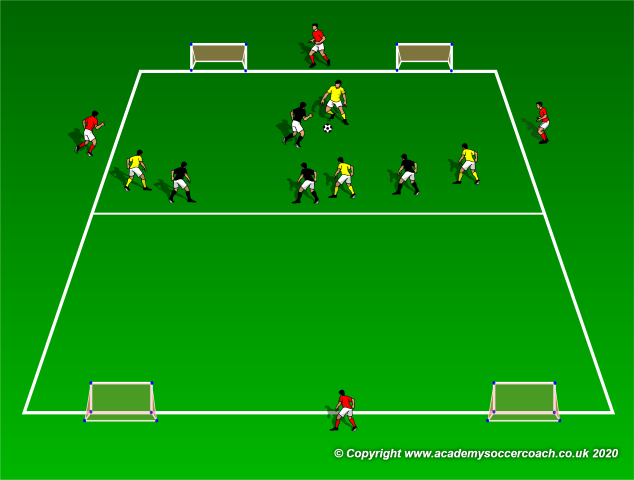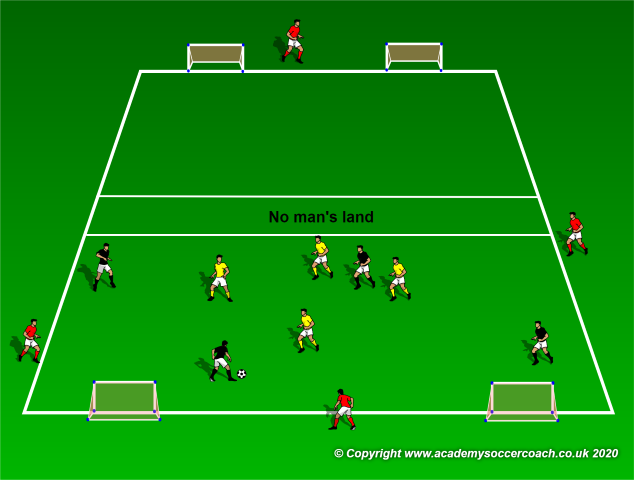- You are here:
- Home »
- Training With a Ball »
- 4v4+4 Aerobic High Intensity
4v4+4 Aerobic High Intensity
By Philip Cauchi
Development of the soccer domains:
Technical: Maintain the quality of technical actions high for a prolonged period of time.
Tactical: In the offensive phase, circulate the ball rapidly with the intention of playing vertically. When the ball is played vertically, the players should quickly provide the target player with support. In the defensive phase, the defending team should recover quickly to prevent the opponents from scoring, win the ball and initiate a counter attack.
Mental: Players should be able to make quick and correct tactical decisions when defending, attacking and during moments of transition for a prolonged period of time.
Physical: Be able to apply the correct technical actions while delaying the onset of fatigue.
Social: Collaborate and communicate with teammates effectively throughout the game. The players should be able to quickly identify and react to their teammates’ movements (visual communication). For example, one player applies pressure on the ball-carrier while the nearby defender covers.
Organisation: Three teams of four players each. Area measuring 40 yards by 30 yards and which is divided into two equal horizontal zones of 20 yards in length each.
Training load:
Series: 6.
Duration each repetition: 3 minutes.
Recovery between repetitions: 1 minute 30 seconds (thus working with a ratio of 1:0.5).
N.B. The training load should be adjusted according to the physical level of the players. With high level players we can have longer durations, more series and also a lower recovery period.
Periodization: The exercise should be carried out after the warm-up as we want the quality of the soccer actions to be high. It should be carried out three days before match day (MD-3).
Targeted energy system: Anaerobic lactic.

The attacking team (blacks) aims to play the ball to the opposite target player (neutral red player).

Once the ball is played to the target player, all the players from both set of teams move into the opposite half. The blacks aim to score, while the yellows try prevent the blacks from scoring, win the ball and counter on the opposite two mini goals.

If the yellow team win the ball they aim to counter in the opposite half in the same way.
Variations:
1. The ball must only be played on the ground.
2. The ball may be played high.
3. Play takes place inside one half of the practice area. If the attacking team scores after combining with the target player from their own half, the goal counts twice. Any other means of scoring such as dribbling the ball into the opposite half counts as a single point.
Progression:
1. To further increase the physical and mental intensity, for a goal to count all members of the attacking team must be in the opposition’s half of the practice area at the moment of scoring. Furthermore, all the players of the defending team must be in their team’s defensive zone. Otherwise if a goal is scored the opponents are awarded double the points.
2. Another method of increasing the level of intensity is to play with the same conditions as in progression 1 but have the two halves of the pitch separated by five meters. This zone is known as the ‘no man’s land’. The dimensions of each half should remain the same.

Progression 2. Increasing the running distance of the players with the introduction of the ‘no man’s land’.
N.B. After each series change the neutral flank and target players.
By Philip Cauchi
